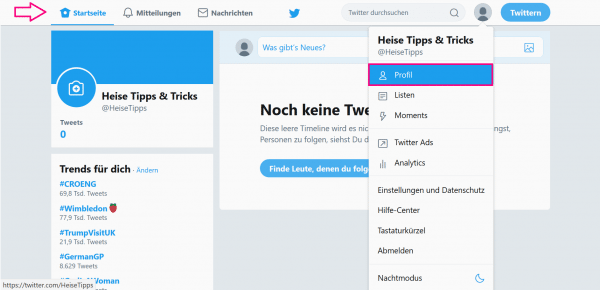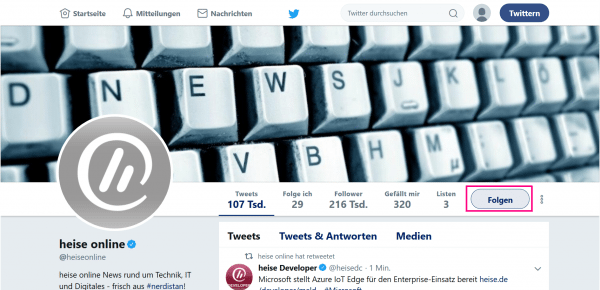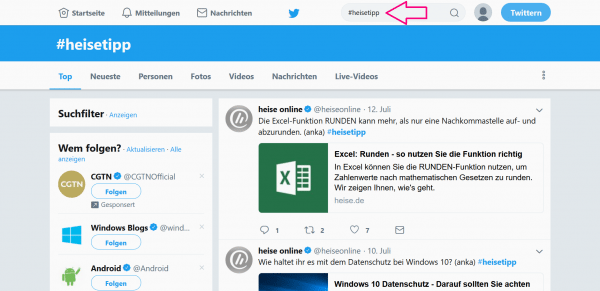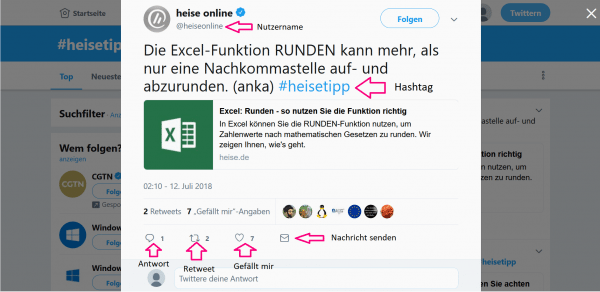Twitter was launched in 2006 and is now known to almost everyone. Also because many better-known people use the platform with the blue bird to give their fans an insight into their lives. Incidentally, Twitter is available both as a website at www.twitter.com and as an app for smartphones and tablets.
Basics
A single post on Twitter is up to 280 characters long and is known as a " tweet ".
As a Twitter user, you have two main pages on which tweets are displayed: the Twitter start page (your so-called home feed) and your profile (also known as the Me page). The Twitter homepage displays any tweets you write that you see from other people you follow. On your personal profile there is a list of all the things that you have ever posted.
By the way: Of course, once you have written tweets, you can simply delete them again.
 Here you can see the Twitter homepage. With a click on the profile picture and "Profile" you will find your profile page.
Here you can see the Twitter homepage. With a click on the profile picture and "Profile" you will find your profile page. Followers
Every single user has an account that starts with @. This is followed by the actual username - for example @heiseonline . In this way, the user can be addressed directly in a post.
If you find a Twitter user particularly interesting, you can " follow " him. This means that this person's posts will be displayed on their own Twitter homepage..

If you 'd like to send a tweet directly to someone else, start your tweet with @username. This is how this person receives a notification. The tweet will be shown to anyone who follows both you and @username. People who only follow you will see the tweet on their home feed.
If you want your tweet to be read by all of your followers , but still be aimed at a specific person, you must not put @username at the beginning of the tweet. It doesn't matter whether you write something like " Great weather today. Isn't it, @username? " Or just put a dot in front of the @ tag - like here: " . @ Username agrees with me that the weather is today is great. "
Hashtags
The # character is what is known as a hashtag. With this you assign a kind of category to your tweet . A hashtag is always linked to a keyword, such as #heisetipp or something similar. If you are particularly interested in a hashtag, you can click on it or simply search for it. How to find more tweets on the subject .

Replies and retweets
You can easily reply to it by clicking on " Reply " or on the small speech bubble below a tweet . Entire discussions can be held that anyone can view with a click on the original tweet. You can also like the post via the heart symbol, i.e. show the publisher that you like it. You can use the letter icon to send private messages. More on this below. In the meantime, Twitter has " retweeted " the arrow symbol
simplified. This makes it easy to share with your followers something that someone else tweeted. The original tweeter is also noted directly in your retweet. In the past, this was not the case, so users wrote an RT in front of the retweets. In this way it was possible to show that the post did not come from them at all..

news
In addition to tweets, which are always public in one form or another, there are also direct messages (often abbreviated as DM for direct message or PM for private message). So you can talk privately with another Twitter user without the conversation being read by all of the world.